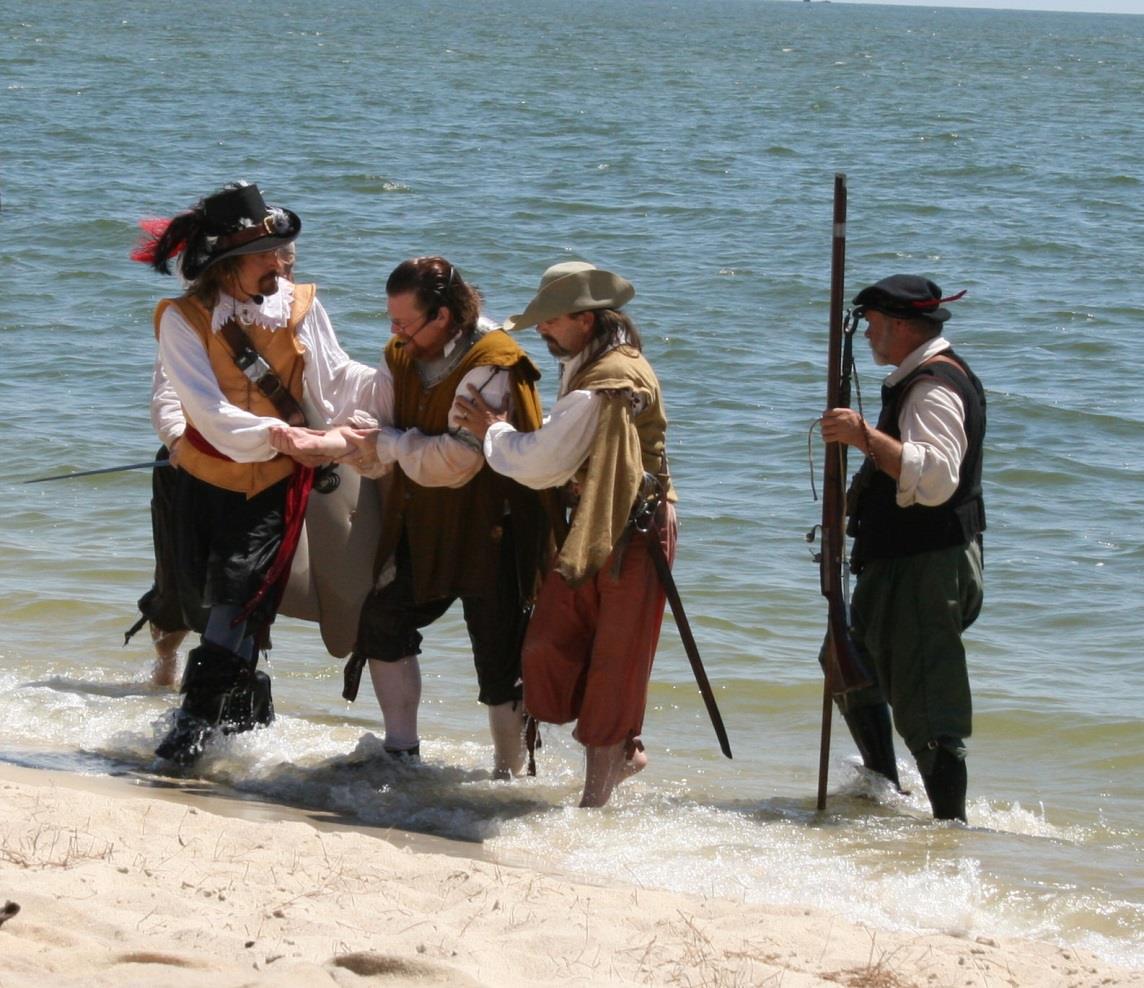Arrival of the Shallop
On April 26, 1607, three ships from the London Company, the
Susan Constant the Godspeed , and the Discovery arrived at what was to be called Cape Henry. In the hold of the largest vessel, the Susan Constant , were sections of an open boat, about 30’ stowed for the long ocean voyage. The ship’s carpenters quickly assembled the boat called a barge or shallop that they would use at first to ferry passengers and cargo to shore and then to explore the shallow waters of Chesapeake Bay. .

Below is a cutaway view of the SUSAN CONSTANT. The shallop was built in England and disassembled. She then would have been stowed in manageable sized sections near the bottom of the hold to be reconstructed at the end of the voyage.

The First Voyage: June 2 – July 21, 1608
On June 2, 1608, after spending more than a year in and around the Jamestown settlement, Captain John Smith set out on his first voyage to explore and map the whole of Chesapeake Bay. Fourteen men six gentlemen, seven tradesmen, and a “Doctor of Physic” accompanied him.

Our story began in July 1608, after Captain John Smith and his intrepid crew have lived together on the shallop for six and a half weeks. During that time they have been unpredictably attacked and welcomed by the Naturals (their name for the local inhabitants). Their small shallop had little room for water and provisions. In the hot June days they spent much time looking for potable water on the Eastern Shore. On the Pocomoke they were beset by a tempest that wrenched the mast from their boat , tore the sails, and nearly
sank them . Exploring the Nanticoke River, the crew befriended the locals who helped them. Although they found fresh water, their food supply was low and mostly spoiled. They crossed the Bay looking for provisions. An easy sail took them almost 100 miles north, but conditions changed. In exploring the Patapsco, they became dispirited by the heavy labor of rowing the shallop in the heat and humidity.
Captain Smith encouraged the men to persevere in the exploration, but then several became ill and the weather deteriorated. Smith decided to turn back for Jamestown on June 15th, barely two weeks into the journey. The next month is a true testament to John Smith’s leadership skills. When the wind and weather improved, Captain Smith persuaded the crew to explore up the Potomac for a possible passage to the East. After nearly a month, they found that the Potomac ended in rocky falls, much like the James. With very little food, they turned south for Jamestown. As the shallop approached the mouth of the Rappahannock, Smith convinced the men that he has many native friends up the river who would feed them. Despite their exhaustion and discomfort, they agreed to continue. Disaster struck as the shallop went hard aground at the mouth of the mighty Rappahannock. What follows is John Smith’s own record of the event from “ The General History of Virginia”.

“…But our boat by reason of the ebb chancing to ground upon a many shoals lying in the entrances of the Rappahannock, we spied many fishes lurking in the reeds….Our captain, sporting himself to catch them by nailing them to the ground with his sword, set us all a fishing….”

“…But it chanced our captain taking a fish from his sword, not knowing her condition, being much of the fashion of a thornback… but [with] a long tail…whereon …is a most poisoned sting of two or three inches long,…which she struck into the wrist of his arm near an inch and a half. No blood nor wound was seen, but a little blue spot.

“But the torment was instantly so extreme that in four hours had so swollen his hand, arm, and shoulder…we all with much sorrow concluded his funeral and prepared his grave in an island hard by, as himself directed.”

“…Yet it pleased God by a precious oil Doctor Russell at the first applied to it when he sounded it with probe that ere night his tormenting pain was so well assuaged that he ate of the fish to his supper….”

“…which gave him no less joy and content to us than ease to himself, for which we called the island “Stingray Isle” after the name of the fish.” From the General History of Virginia, New England, and the Summer Isles (1624) by John Smith, pg. 59.
As time passed and erosion claimed the “Isle”, the land nearest Captain John Smith’s near death experience became simply Stingray Point and so it is called today, nearly 400 years later.




